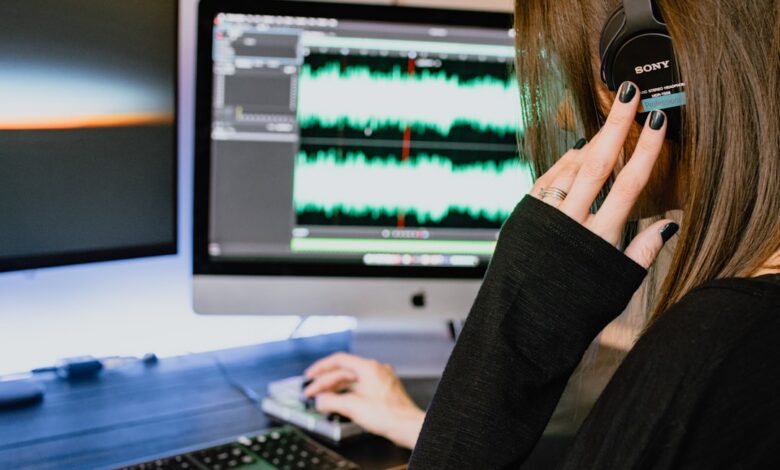Best Free Plugins For Ableton

So, you’re diving into the amazing world of Ableton Live! That’s awesome. Ableton is super powerful, but sometimes you need a little extra something to really make your music shine. Luckily, there’s a ton of fantastic free plugins out there that can help you do just that. As someone who’s spent years tinkering with Ableton, I’m happy to share some of my absolute favorite free plugins to level up your productions without spending a dime.
Think of plugins like extra tools in your toolbox. Some are for fixing problems (like removing noise), while others are for adding cool effects (like making your synth sound like it’s coming from outer space!). The best part? These freebies can often do things that even some expensive plugins can’t.

Essential Free Plugins for Every Ableton Producer
Alright, let’s get down to business. These are the free plugins that I find myself reaching for time and time again. They cover a range of needs, from mixing and mastering to creative sound design.
Mixing and Mastering Essentials
Mixing and mastering are the secret sauce that takes a good track and makes it sound professional. Here are a few free plugins to help you get there:
TDR Nova: This is an incredibly versatile EQ (equalizer). It’s not just a basic EQ; it’s a parallel dynamic EQ. That might sound complicated, but basically, it means it can automatically adjust the EQ based on the sound, helping you tame harsh frequencies or boost certain elements without making things sound unnatural. It’s perfect for cleaning up muddiness in your bass or adding some sparkle to your vocals.
Limiter No6: Don’t let the name fool you – this plugin is more than just a limiter. It’s a whole mastering chain in one plugin, including compression, filtering, and even saturation. It might take some time to learn all its features, but it’s well worth the effort. It can make your tracks sound louder and more polished, ready for release.
SPAN: This is a real-time spectrum analyzer. It visually shows you the frequencies that are present in your audio. This is super helpful for identifying problem areas in your mix (like a build-up of low-end rumble) and making informed decisions about EQ and other processing.
Creative Effects to Spark Your Imagination
Okay, now for the fun stuff! These plugins are all about adding character and excitement to your sounds.
Valhalla SuperMassive: This is a reverb and delay plugin on steroids. It can create huge, ethereal spaces or complex, evolving delay patterns. It’s fantastic for adding depth and atmosphere to your synths, vocals, or even drums. Seriously, experiment with this one – you’ll be amazed at the sounds you can create.
TAL-Reverb-4: A classic, smooth reverb that’s easy to use and sounds great on just about anything. If SuperMassive is for huge, experimental sounds, TAL-Reverb-4 is for creating more subtle, natural-sounding spaces. It’s perfect for adding a touch of warmth and depth to your tracks.
OTT: This is a recreation of a popular multiband compressor setting used in electronic music production. It can make your sounds incredibly punchy and upfront. Be careful with this one, as it can be quite aggressive, but used subtly, it can add a lot of energy to your tracks.
Instruments to Expand Your Sound Palette
Need some new sounds to play with? These free instruments can help you expand your sonic horizons.
LABS by Spitfire Audio: Spitfire Audio is known for their high-quality sample libraries, and LABS is a collection of free instruments that showcase their expertise. You’ll find everything from strings and pianos to synths and experimental sounds. The interface is incredibly simple, making it easy to find inspiring sounds quickly.
Vital (Basic): Vital is a powerful spectral warping wavetable synth. While there’s a paid version, the free version is still incredibly capable. You can create a huge range of sounds, from lush pads to aggressive basses. It might seem a little intimidating at first, but there are tons of tutorials online to help you get started.
Tips for Using Free Plugins Effectively
Okay, you’ve got your new plugins. Now what? Here are a few tips to help you get the most out of them:
- Don’t Overdo It: It’s tempting to throw a bunch of plugins on every track, but that can quickly lead to a cluttered and muddy mix. Start with a clean sound and add plugins only when needed to solve a problem or enhance a sound.
- Experiment and Explore: Don’t be afraid to try different settings and combinations. The best way to learn how a plugin works is to experiment with it and see what it can do.
- Read the Manuals (or Watch Tutorials): Okay, I know reading manuals isn’t the most exciting thing in the world, but it can be really helpful for understanding the more complex features of a plugin. There are also tons of great tutorials on YouTube that can walk you through the basics.
- Trust Your Ears: Ultimately, the most important thing is to trust your ears. If something sounds good, then it sounds good! Don’t get too caught up in technical details or what other people say.
Safety First!
Downloading plugins from unofficial sources can be risky. Always download your plugins from the official website of the developer. This helps ensure that you’re getting a safe and virus-free file.
Frequently Asked Questions
Are free plugins as good as paid plugins?
That’s a tricky question! Some free plugins are absolutely as good as (or even better than) some paid plugins. It really depends on the specific plugin and what you’re trying to achieve. Often paid plugins offer more features or a more polished interface, but that doesn’t always mean they sound better. Many professional producers rely heavily on free plugins in their work.
Will these plugins work with all versions of Ableton Live?
Most of these plugins are available in VST format, which means they should work with most versions of Ableton Live (including the latest version). However, it’s always a good idea to check the plugin’s website to confirm compatibility before downloading.
How do I install these plugins in Ableton Live?
The installation process varies slightly depending on the plugin. Usually, you’ll download a file and run an installer. Ableton Live will then scan your plugin folders and make the new plugins available in your browser. If you’re having trouble, there are plenty of tutorials online that can walk you through the process step-by-step.
So there you have it – a solid starting point for building your free Ableton plugin arsenal. Remember to explore, experiment, and most importantly, have fun! These plugins are tools to help you express your creativity, so don’t be afraid to push the boundaries and see what you can create.



